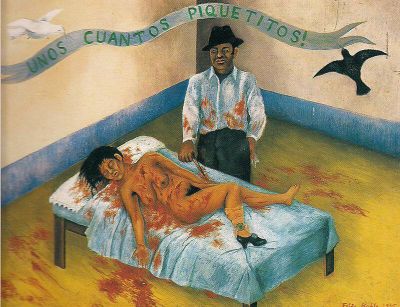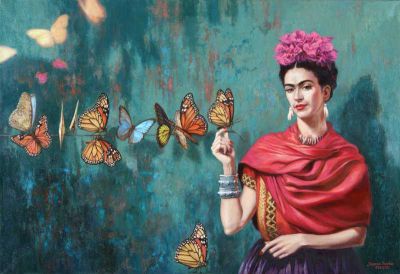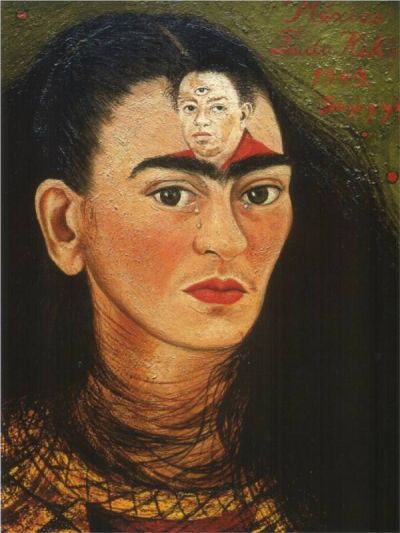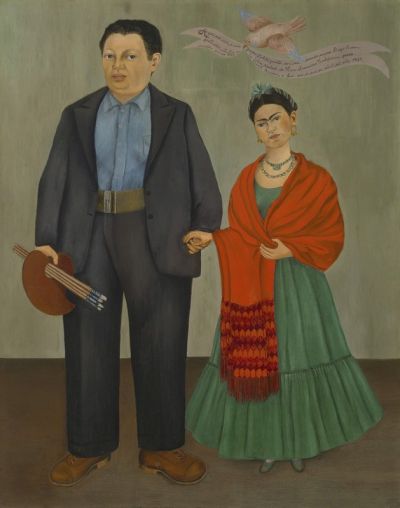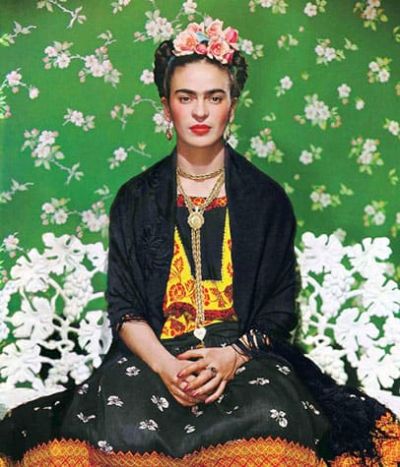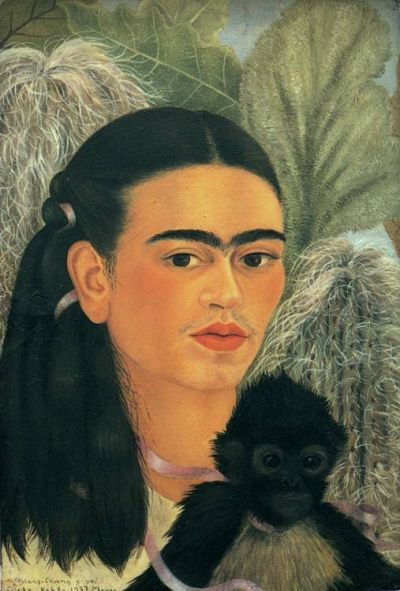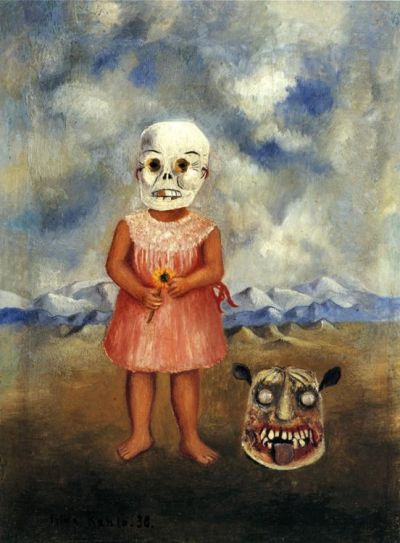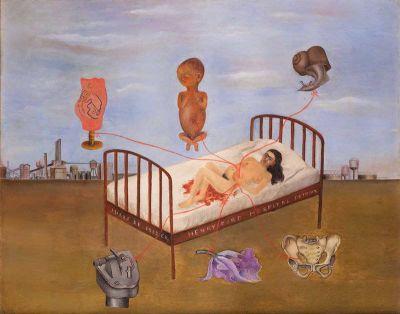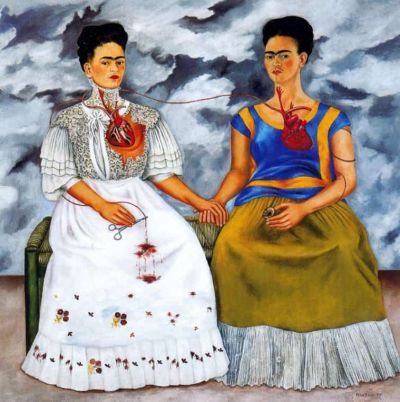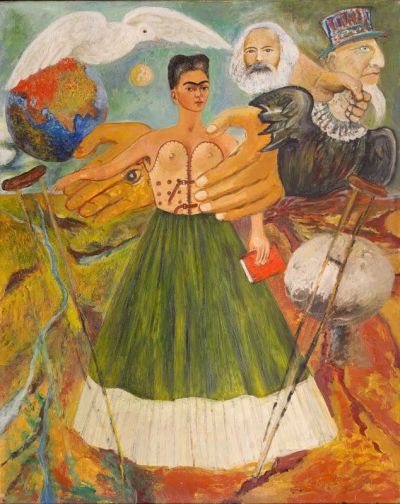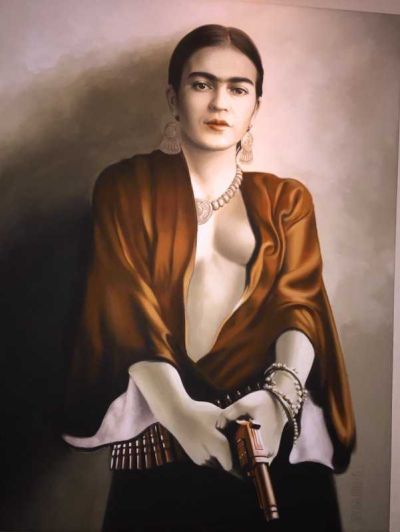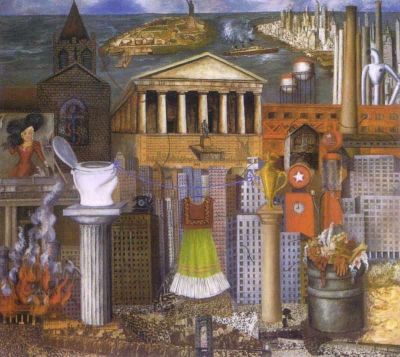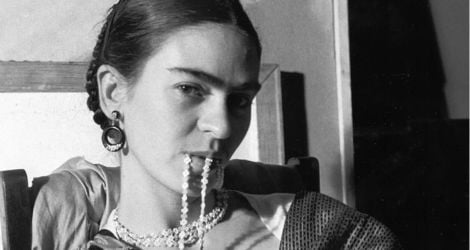
What about Frida Kahlo?
Small pins penetrate Kahlo's flesh, revealing that she still 'hurts' as a result of illness and accident, and a trademark tear represents her ongoing battle with the resulting psychological excess. Frida Kahlo has always used visual representation of physical anguish in an attempt to better understand emotional suffering. Prior to Kahlo's efforts, the vocabulary of loss, death, and selfhood had been studied rather thoroughly by a few male artists (including Albrecht Dürer, Francisco Goya, and Edvard Munch), but had not yet been thoroughly analyzed by a woman.
Indeed, Kahlo not only entered an existing language, but she also built on it and made it her own. Kahlo opened up our insides to assist explain human behaviors on the surface by literally displaying inside organs and depicting her own body in a bleeding and damaged state. She gathered elements that would often appear throughout her work, such as ribbons, hair, and beloved animals, and as a result, she devised a new and clear way to convey the most difficult parts of female identity. Kahlo's famous visage provides everlasting trauma support, and she has influence that cannot be overlooked as not only a 'great artist' but also a figure deserving of our devotion.
Kahlo made it acceptable for women to publicly express their emotions and frustrations to better understand them. It became critical for female artists to have a female role model, which Frida Kahlo provided.
Kahlo, like many Surrealists, considers the issue, "What is Woman?" Following a series of losses, she wonders to what extent parenthood or its absence influences feminine identity. She permanently affects the definition of maternal subjectivity. Through umbilical symbolism (typically represented by ribbons), it is apparent that Kahlo is connected to everything around her, and that she is a mother without children.
Because she was frequently alone, she became obsessed with self-portraiture. Her introspection sparked a keen curiosity in identity. Her mixed German-Mexican lineage piqued her curiosity, as did her dual roles as artist, lover, and wife.
Throughout her work, Kahlo employs religious iconography. She appears as the Madonna, clutching her 'animal babies,' and then transforms into the Virgin Mary, cradling her husband, the famed national painter Diego Rivera. She resembles Saint Sebastian and even seems like the martyred Christ. When she takes the place at the head of the table in her Last Supper-style painting, she places herself as a prophet, and her depiction of the accident that left her impaled on a metal rod (and covered in gold dust when lying injured) evokes the crucifixion and suggests her own holiness.
Prior to Kahlo, women who strove to communicate the most extreme and profound feelings were frequently deemed hysterical or insane, whilst men were associated with the'melancholy' personality type. By being creatively productive despite her grief, Kahlo demonstrated that women, like men, can be melancholy rather than depressed, and that these phrases should not be considered gendered.
